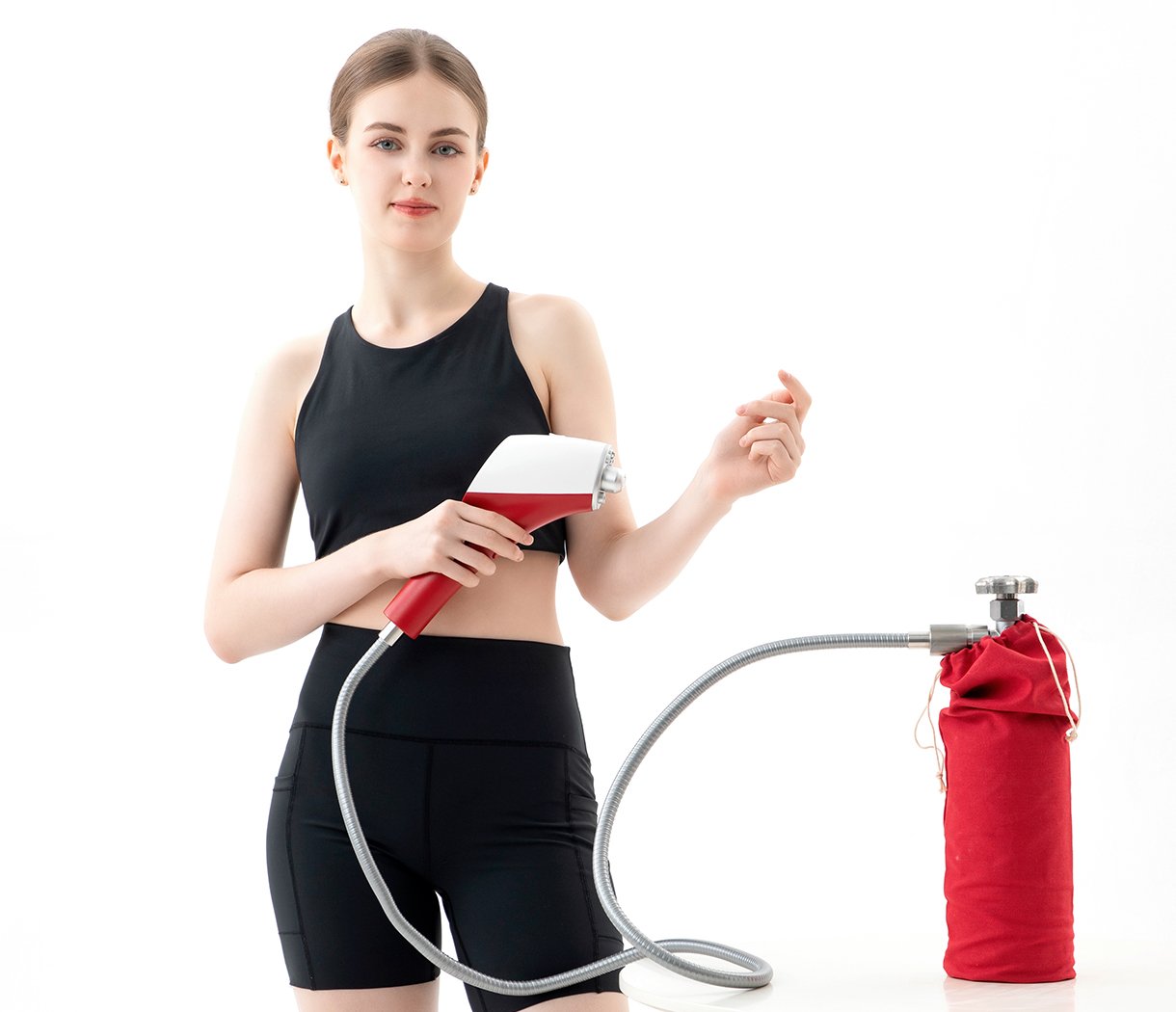Introduction: Two Powerful Therapies, One Big Decision
When it comes to pain relief, tissue healing, and recovery from injuries, two advanced, non-invasive therapies have been gaining significant attention: CO2 Cryotherapy and Laser Therapy. Both are highly effective in promoting healing, but each works through different mechanisms and offers unique benefits for a range of conditions. Whether you’re dealing with acute pain, chronic discomfort, or recovery after a surgery or injury, understanding how these therapies work can help you make the right choice. Let’s dive into the science and explore the applications, benefits, and limitations of each treatment.
CO2 Cryotherapy: The Cool, Chilling Hero
How It Works:
CO2 Cryotherapy uses controlled bursts of carbon dioxide gas to target specific areas of the body. When CO2 is applied to the skin, it cools the tissue rapidly, causing a brief but intense vasoconstriction. This constriction helps push out stagnant blood from the area, and once the cooling period ends, the blood vessels dilate, flooding the region with fresh, oxygenated blood. This process not only reduces swelling but also stimulates tissue repair and accelerates healing. The key benefit of CO2 Cryotherapy lies in its ability to stimulate circulation and reduce inflammation through the sharp temperature contrast. This method is widely used for both acute injuries like muscle strains and sprains and chronic pain conditions such as arthritis or tendonitis. The cooling effect can provide immediate pain relief, reduce swelling, and speed up recovery by encouraging blood flow to the affected areas.
Applications:
CO2 Cryotherapy is effective for a wide range of conditions, from sports injuries to long-term joint pain. It’s commonly used for:
- Muscle recovery after intense physical activity
- Arthritis and joint pain relief
- Tendonitis and ligament injuries
- Post-surgical swelling and recovery
- Chronic conditions like fibromyalgia or inflammation-related pain
Pros and Cons:
CO2 Cryotherapy is praised for providing quick relief, especially for acute injuries. It’s non-invasive, safe, and doesn’t require any downtime, making it perfect for individuals with busy schedules. The primary advantage is its rapid effect in reducing pain and swelling, especially in the first few sessions. However, its impact may be temporary, and depending on the severity of the condition, multiple sessions may be required for sustained relief. Additionally, some patients may find the cold sensation uncomfortable, particularly in sensitive areas.
Laser Therapy: Healing with Light
How It Works:
Laser Therapy, specifically Class IV Laser Therapy, works by using focused light energy to penetrate the skin and reach deep tissues. Unlike CO2 Cryotherapy, which works on the surface, laser therapy targets underlying tissue, stimulating the mitochondria within cells. This increases ATP (adenosine triphosphate) production, which provides the energy necessary for cellular repair and regeneration. The light energy also helps to reduce inflammation, promote collagen production, and accelerate tissue healing by enhancing blood circulation. Laser therapy can be used to treat a variety of musculoskeletal conditions, including chronic pain, soft tissue injuries, and nerve-related issues. The wavelengths used in Class IV lasers can penetrate deeper layers of the skin, reaching muscles, ligaments, tendons, and joints. This makes it an ideal treatment for deep tissue injuries and chronic conditions that don’t respond well to surface treatments.
Applications:
Laser Therapy is often used to treat:
- Chronic pain conditions, including back pain, sciatica, and neck pain
- Soft tissue injuries like muscle strains, tendonitis, and ligament tears
- Post-surgery recovery, especially for patients with tendon or ligament damage
- Neuropathy and nerve-related pain, such as in carpal tunnel syndrome or diabetic neuropathy
- Wound healing, especially chronic wounds that resist traditional treatments
Pros and Cons:
One of the standout benefits of laser therapy is its ability to target deep tissue. It’s particularly effective for chronic conditions that require sustained healing, such as arthritis or deep muscle injuries. Laser therapy is also non-invasive and painless, offering a long-term solution that helps stimulate the body’s natural healing process. However, while the treatment is highly effective, it does require multiple sessions to see full benefits, and results may take a little longer compared to more immediate therapies like CO2 Cryotherapy. Additionally, laser therapy can be more expensive due to the equipment and the number of sessions needed for optimal results.
The Ultimate Showdown: Cold or Hot?
Now that we’ve explored the key benefits of both therapies, let’s compare them side-by-side:
- For Fast Relief: If you’re looking for immediate, short-term pain relief, CO2 Cryotherapy is the winner. Its cooling effect provides quick relief, especially for injuries like sprains, muscle soreness, and post-workout recovery.
- For Deep Tissue Healing: When dealing with chronic pain or deeper musculoskeletal injuries, Laser Therapy is the go-to treatment. It promotes tissue regeneration and reduces inflammation at a cellular level, offering lasting results.
- For Athletic Recovery: CO2 Cryotherapy is perfect for athletes who need fast recovery times, as it reduces muscle soreness and inflammation rapidly. On the other hand, Laser Therapy is ideal for those recovering from more severe injuries or chronic issues that need deeper healing.
- For Long-Term Healing: Laser Therapy stands out for its ability to promote long-term healing and regeneration. If you’re dealing with persistent pain or injury, this therapy offers a sustainable option for recovery.
In conclusion, both CO2 Cryotherapy and Laser Therapy are powerful tools in modern healing, with each offering unique advantages. Whether you choose the cold, rapid relief of cryotherapy or the deep, regenerative power of laser therapy depends on your specific needs and goals.



